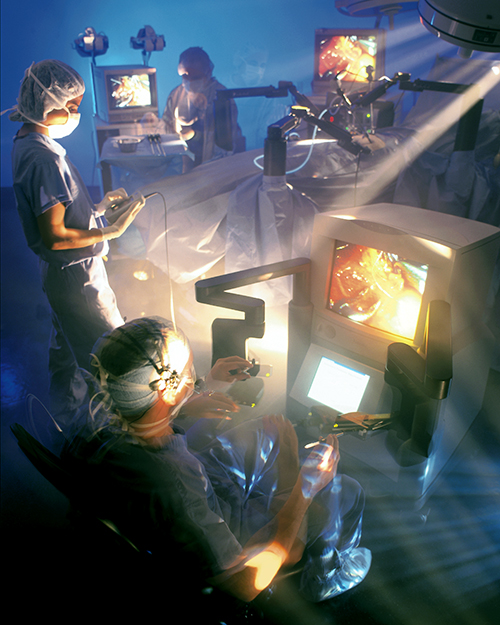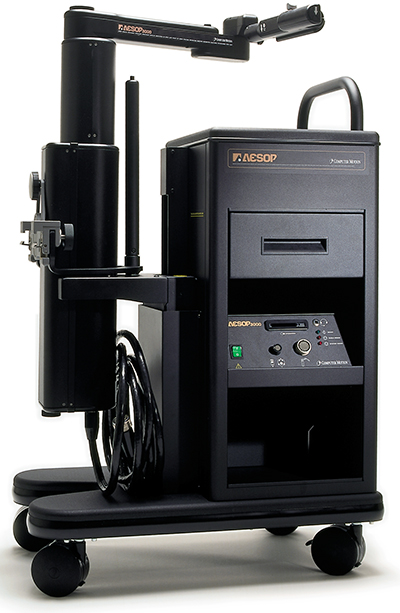
Robotic Surgery
Operating rooms are stepping into the 21st century thanks to a robotic arm that can assist surgeons in non-invasive, endoscopic procedures. Computer Motion, Inc., in Santa Barbara, California, originally performed research under a NASA Small Business Innovation Research (SBIR) contract from the Jet Propulsion Laboratory to develop AESOP,® (Automated Endoscopic System for Optimal Positioning).
NASA hopes to make use of the technology powering the robotic arm of AESOP to service satellites and inspect payloads on the Space Shuttle in the future. The hope is to use robotics on space repair missions requiring exact and precise movements that exceed human dexterity.
Nearly a million endoscopic surgeries are performed annually by inserting a slender camera into a small incision in the patient to access the part of the body targeted for the operation. The surgeon uses the camera to monitor the operation, which requires long, narrow instruments. This endoscopic approach reduces the healing and recovery time needed by the patient and lowers healthcare costs.
Now, with Computer Motion's AESOP, surgeons can control the motion of the camera, which is attached to a robotic arm. AESOP eliminates the need for surgical staff to hold the camera in place. The robotic arm also allows for a steadier view of the surgery and more precise and consistent movements of the camera.
The AESOP arm uses Computer Motion's voice recognition software, which is pre-recorded onto a voice card and inserted into the controller. Computer Motion's NASA-funded research determined that voice controlled commands are preferred in the operating room as opposed to alternatives such as eye-tracking and head-tracking, which control motion in response to movements of the surgeon's head.
A second generation of this technology, called the ZEUS™ Robotic Surgical System, has the potential to make endoscopic procedures even more accessible. Traditional endoscopic methods require a long learning curve and a greater dexterity than some possess. Also, suturing for microsurgical procedures such as endoscopic coronary artery bypass graft often exceeds typical human dexterity limits.
However, through the use of a master-slave robotic system, surgeon motions are scaled down, allowing the doctor to make more natural movements. By manipulating additional robotic arms, the surgeon can move the instruments with the precision the procedure requires. Incisions can be made smaller than the diameter of a pencil as compared to the 12- to 15-inch incision and cracked ribs traditional open-heart surgery requires.
One final benefit of the ZEUS system is that it allows the surgeon to perform the operation seated in an ergonomic position, eliminating the problems of fatigue and frustration resulting from leaning over the patient in an awkward posture for hours.
Last summer, the first completely endoscopic coronary artery bypass graft was performed using the ZEUS system and has now been put in use at 19 sites. Computer Motion hopes to use AESOP and ZEUS as the cornerstone technologies for tomorrow's Intelligent Operating Room™.
AESOP® is a registered trademark of Computer Motion, Inc.
ZEUS™ and Intelligent Operating Room™ are trademarks of Computer Motion, Inc.

AESOP,® a voice-controlled robotic endoscopic positioning system, provides an absolutely steady picture during minimally invasive surgeries.

Doctors seated in the ZEUS™ Robotic Surgical System can perform minimally invasive surgeries without suffering from fatigue or stress during lengthy operations.













